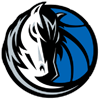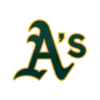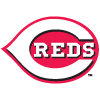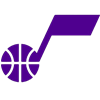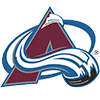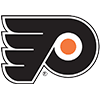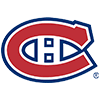We've reached the end of the MLB regular season, or at least the end of this weekly column. The real-world playoff picture may still shift over the final few days, and there are still fantasy playoff matchups to be decided, as well as some tense battles for the final win, save, RBI or homer in roto leagues.
The answers to the questions, "Who should I actually have picked back in March?" and "Which picks are ruining my fantasy team?" are clear at this point, however, and nothing that happens in the last three or four games of the season will alter them significantly. As such, it's time for my annual end-of-season exercise, taking a round-by-round look at the best and worst picks of the season.
The players listed below represent the best or worst pick in their specific round in terms of how much their final earned auction value ranking differed from their NFBC average draft position over the final month of draft season. I'll list a player for every round and give deeper dives on several of the most significant names. Note that we'll skip fallers who missed over half the season due to injury, but players who missed that much time due to being unable to stick in the majors are still eligible. The fallers section cuts off prior to the reserve rounds, as those are roster spots you were always expecting to churn through. For Erik Halterman's final column, he ranks players by how much value they
We've reached the end of the MLB regular season, or at least the end of this weekly column. The real-world playoff picture may still shift over the final few days, and there are still fantasy playoff matchups to be decided, as well as some tense battles for the final win, save, RBI or homer in roto leagues.
The answers to the questions, "Who should I actually have picked back in March?" and "Which picks are ruining my fantasy team?" are clear at this point, however, and nothing that happens in the last three or four games of the season will alter them significantly. As such, it's time for my annual end-of-season exercise, taking a round-by-round look at the best and worst picks of the season.
The players listed below represent the best or worst pick in their specific round in terms of how much their final earned auction value ranking differed from their NFBC average draft position over the final month of draft season. I'll list a player for every round and give deeper dives on several of the most significant names. Note that we'll skip fallers who missed over half the season due to injury, but players who missed that much time due to being unable to stick in the majors are still eligible. The fallers section cuts off prior to the reserve rounds, as those are roster spots you were always expecting to churn through. For Erik Halterman's final column, he ranks players by how much value they added
Before we get to the names, I wanted to thank everyone who read and commented this year. It's a privilege to be able to write about baseball, but doing so for an engaged audience is so much much more enjoyable than sending ideas off into the void. I wish you all the best of luck over the final few days of the season.
RISERS
Round 1: 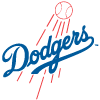 Freddie Freeman, 1B, Dodgers: A different methodology would have given this spot to Ronald Acuna, who went from the top of a tier of five names under first-pick consideration to far and away the most valuable fantasy player of the year. Acuna was already top of the ADP charts, however, so from a pure "spots gained" perspective, Freeman was the best pick of the round. The veteran had a remarkable age-33 season, with his 163 wRC+ (the product of a .333/.412/.568 slash line) standing as his best mark of his career outside of the 60-game 2020 campaign. While you might expect an aging slugger to be at best a four-category contributor, Freeman also ran far more than ever. How many players set a career high in steals at age 32 with 13 and then crush that mark in their age-33 season by swiping a full 23 bags? On the one hand, Freeman may be harder to trust than most first rounders given that age could make its impact at any point. On the other hand, that's exactly the logic that caused me to miss out on Freeman entirely during last draft season. What's to stop him from doing this again?
Freddie Freeman, 1B, Dodgers: A different methodology would have given this spot to Ronald Acuna, who went from the top of a tier of five names under first-pick consideration to far and away the most valuable fantasy player of the year. Acuna was already top of the ADP charts, however, so from a pure "spots gained" perspective, Freeman was the best pick of the round. The veteran had a remarkable age-33 season, with his 163 wRC+ (the product of a .333/.412/.568 slash line) standing as his best mark of his career outside of the 60-game 2020 campaign. While you might expect an aging slugger to be at best a four-category contributor, Freeman also ran far more than ever. How many players set a career high in steals at age 32 with 13 and then crush that mark in their age-33 season by swiping a full 23 bags? On the one hand, Freeman may be harder to trust than most first rounders given that age could make its impact at any point. On the other hand, that's exactly the logic that caused me to miss out on Freeman entirely during last draft season. What's to stop him from doing this again?
Round 2: 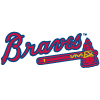 Spencer Strider, SP, Atlanta: With the benefit of hindsight, it looks somewhat ridiculous that we were able to get a pitcher at the back of the second round who was coming off a season in which he recorded a 2.67 ERA and a 38.3 percent strikeout rate. Strider was available at a discount because, despite looking like arguably the best pitcher in the world, he hadn't even spent a full season as a major-league starter, debuting in that role on May 30 of last year. That discount has long since expired, and his second consecutive excellent season is likely to vault him into the top half of the first round in many drafts. Strider did give up many more runs this season, with his ERA jumping all the way to 3.81, though a much more modest jump in his SIERA (2.41 to 2.82) tells a different story. His 37.1 percent strikeout rate is a near match for last season's mark and means he now owns the third- and sixth-best seasons all time in that category (min. 130 innings). He also trimmed a point off his walk rate, which came in at 7.5 percent. If there's one negative to point to, it's that his groundball rate fell six points to 34.3 percent, contributing to a jump in HR/9 from 0.48 to 1.09. It's a tolerable Achilles heel, however, and Strider's sky-high whiff rate means that even with a high flyball rate, his raw number of flyballs allowed isn't all that high.
Spencer Strider, SP, Atlanta: With the benefit of hindsight, it looks somewhat ridiculous that we were able to get a pitcher at the back of the second round who was coming off a season in which he recorded a 2.67 ERA and a 38.3 percent strikeout rate. Strider was available at a discount because, despite looking like arguably the best pitcher in the world, he hadn't even spent a full season as a major-league starter, debuting in that role on May 30 of last year. That discount has long since expired, and his second consecutive excellent season is likely to vault him into the top half of the first round in many drafts. Strider did give up many more runs this season, with his ERA jumping all the way to 3.81, though a much more modest jump in his SIERA (2.41 to 2.82) tells a different story. His 37.1 percent strikeout rate is a near match for last season's mark and means he now owns the third- and sixth-best seasons all time in that category (min. 130 innings). He also trimmed a point off his walk rate, which came in at 7.5 percent. If there's one negative to point to, it's that his groundball rate fell six points to 34.3 percent, contributing to a jump in HR/9 from 0.48 to 1.09. It's a tolerable Achilles heel, however, and Strider's sky-high whiff rate means that even with a high flyball rate, his raw number of flyballs allowed isn't all that high.
Round 3:  Matt Olson, 1B, Atlanta
Matt Olson, 1B, Atlanta
Round 4:  Corbin Carroll, OF, Diamondbacks
Corbin Carroll, OF, Diamondbacks
Round 5:  Zac Gallen, SP, Diamondbacks
Zac Gallen, SP, Diamondbacks
Round 6: 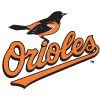 Gunnar Henderson, 3B/SS, Orioles
Gunnar Henderson, 3B/SS, Orioles
Round 7:  Felix Bautista, RP, Orioles
Felix Bautista, RP, Orioles
Round 8: 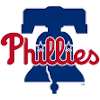 Nick Castellanos, OF, Phillies: Here's a name I definitely didn't expect to see on this list. Castellanos fell flat on his face in his first season in Philadelphia, struggling to a .694 OPS with just 13 homers in the regular season and following it up with a .478 OPS and zero homers in the playoffs. A 40 percent strikeout rate through his first 13 games this year seemed to hint that he was destined to sink to even further depths, but he's turned things around to hit .274/.312/.481 with just four games left to play. If he homers once in those four games, he'll reach 30 for the second time in his career, while he's also managed a career-high in steals (11). He's also been very durable, coming to the plate 660 times, a mark he beat each year from 2017 through 2019 but hasn't come close to since. An everyday role in a lineup filled with other big names helped Castellanos to a career-high 106 RBI, his third time passing the century mark. That's not to say that everything is perfect under the hood, however, as Castellanos' 27.7 percent strikeout rate (his worst full-season mark, not counting 2020) and 5.3 percent walk rate make for quite a poor combination. His contact quality (10.5 percent barrel rate, 43.6 percent hard hit rate) remained strong, but as those dip as he gets deeper into his thirties, that poor plate discipline could become a bigger problem.
Nick Castellanos, OF, Phillies: Here's a name I definitely didn't expect to see on this list. Castellanos fell flat on his face in his first season in Philadelphia, struggling to a .694 OPS with just 13 homers in the regular season and following it up with a .478 OPS and zero homers in the playoffs. A 40 percent strikeout rate through his first 13 games this year seemed to hint that he was destined to sink to even further depths, but he's turned things around to hit .274/.312/.481 with just four games left to play. If he homers once in those four games, he'll reach 30 for the second time in his career, while he's also managed a career-high in steals (11). He's also been very durable, coming to the plate 660 times, a mark he beat each year from 2017 through 2019 but hasn't come close to since. An everyday role in a lineup filled with other big names helped Castellanos to a career-high 106 RBI, his third time passing the century mark. That's not to say that everything is perfect under the hood, however, as Castellanos' 27.7 percent strikeout rate (his worst full-season mark, not counting 2020) and 5.3 percent walk rate make for quite a poor combination. His contact quality (10.5 percent barrel rate, 43.6 percent hard hit rate) remained strong, but as those dip as he gets deeper into his thirties, that poor plate discipline could become a bigger problem.
Round 9:  Christian Walker, 1B, Diamondbacks
Christian Walker, 1B, Diamondbacks
Round 10:  Nico Hoerner, 2B/SS, Cubs
Nico Hoerner, 2B/SS, Cubs
Round 11: 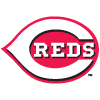 Alexis Diaz, RP, Reds
Alexis Diaz, RP, Reds
Round 12: 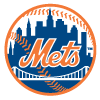 Kodai Senga, SP, Mets
Kodai Senga, SP, Mets
Round 13:  Cody Bellinger, 1B/OF, Cubs
Cody Bellinger, 1B/OF, Cubs
Round 14:  J.D. Martinez, DH, Dodgers
J.D. Martinez, DH, Dodgers
Round 15: 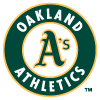 Esteury Ruiz, OF, Athletics
Esteury Ruiz, OF, Athletics
Round 16: 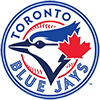 Jose Berrios, SP, Blue Jays: If you want to bet on a pitcher shaking off an outlier bad season and returning to form next season — perhaps a certain fellow Blue Jays righty — Berrios' 2023 campaign would seem to endorse that idea. After several seasons as a good, but not great, starter, the righty seemed more likely to take a step forward than back after posting career bests in strikeout rate (26.1 percent), walk rate (5.8 percent) and ERA (3.52) in 2021, but he proceeded to fall off a cliff. His strikeout rate fell to 19.8 percent as his ERA spiked to 5.23. Those who drafted him this past offseason likely did so expecting at best a modest step back toward his previous career norms. Instead, they got a pitcher who bore a striking resemblance to past versions of himself:
Jose Berrios, SP, Blue Jays: If you want to bet on a pitcher shaking off an outlier bad season and returning to form next season — perhaps a certain fellow Blue Jays righty — Berrios' 2023 campaign would seem to endorse that idea. After several seasons as a good, but not great, starter, the righty seemed more likely to take a step forward than back after posting career bests in strikeout rate (26.1 percent), walk rate (5.8 percent) and ERA (3.52) in 2021, but he proceeded to fall off a cliff. His strikeout rate fell to 19.8 percent as his ERA spiked to 5.23. Those who drafted him this past offseason likely did so expecting at best a modest step back toward his previous career norms. Instead, they got a pitcher who bore a striking resemblance to past versions of himself:
| Year(s) | ERA | WHIP | K% | BB% | GB% |
|---|---|---|---|---|---|
| 2017-2021 | 3.74 | 1.17 | 24.4% | 7.0% | 41.4% |
| 2023 | 3.65 | 1.19 | 23.5% | 6.6% | 41.6% |
You could quibble a bit about the strikeouts, but that's about as close as you can get to an exact copy of Berrios' previous stat lines. Concern about Berrios' ERA trailing his 4.08 SIERA by a fair amount are reasonable, but that's a match for past Berrios as well, as he posted a 4.02 SIERA over that same five-year period. It doesn't seem unreasonable to act as if 2022 never happened when evaluating Berrios this winter.
Round 17: 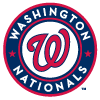 CJ Abrams, SS, Nationals
CJ Abrams, SS, Nationals
Round 18: 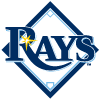 Zach Eflin, SP, Rays
Zach Eflin, SP, Rays
Round 19:  Yandy Diaz, 1B/3B, Rays
Yandy Diaz, 1B/3B, Rays
Round 20:  Isaac Paredes, 1B/2B/3B, Rays: Paredes owns a hard hit rate of 28.4 percent, making him one of just 10 qualified hitters who sit below 30 percent in that metric. He also has 31 homers, tied for 20th in the league. Across the Statcast era (2015-today), 134 qualified hitters have finished a 162-game season with a hard-hit rate south of 30 percent; they've averaged just 10.4 homers, with Jose Altuve's 28 home runs last year marking the only other time someone has finished with more than 25. Paredes gets to all that power despite his weak contact by being an outlier in terms of his launch angle, which averaged 22.0 degrees last season, edging out Max Muncy for second among qualified hitters. It also doesn't hurt that he makes an above-average amount of contact, striking out 18.1 percent of the time. It's an unusual profile, as frequent, weak contact tends to lead to average and not power, which may make it harder to trust him next draft season. He's become an expert at placing the ball just over the left field wall, making his spray charts look like a mirror image of Didi Gregorius':
Isaac Paredes, 1B/2B/3B, Rays: Paredes owns a hard hit rate of 28.4 percent, making him one of just 10 qualified hitters who sit below 30 percent in that metric. He also has 31 homers, tied for 20th in the league. Across the Statcast era (2015-today), 134 qualified hitters have finished a 162-game season with a hard-hit rate south of 30 percent; they've averaged just 10.4 homers, with Jose Altuve's 28 home runs last year marking the only other time someone has finished with more than 25. Paredes gets to all that power despite his weak contact by being an outlier in terms of his launch angle, which averaged 22.0 degrees last season, edging out Max Muncy for second among qualified hitters. It also doesn't hurt that he makes an above-average amount of contact, striking out 18.1 percent of the time. It's an unusual profile, as frequent, weak contact tends to lead to average and not power, which may make it harder to trust him next draft season. He's become an expert at placing the ball just over the left field wall, making his spray charts look like a mirror image of Didi Gregorius':
I'm not at all confident that Paredes will hit a single homer to center or right field next season, but there's equally no reason to believe that he'll suddenly lose the ability to land the ball just over the wall. As he loses strength, his homers may quickly turn into warning-track flyouts, but he's just 24 years old, so that's not something to worry about yet.
Round 21:  Justin Steele, SP, Cubs
Justin Steele, SP, Cubs
Round 22:  Lane Thomas, OF, Nationals
Lane Thomas, OF, Nationals
Round 23:  Christopher Morel, 2B/OF, Cubs: Morel may have been the player I was stumping for most during draft season, so when he failed to crack the Opening Day roster and spent all of April in the minors, it wasn't a great look. The fact that he nonetheless finished as the best pick of his round despite spending less than five months in the majors explains why I was so excited about him, however. Interestingly, though, he didn't get to his results in quite the way it looked like he might. After his rookie season, it looked like his path to overcoming a problematic strikeout rate (which has sat north of 30 percent in both of his MLB seasons) would be by doing a bit of everything, as he managed 16 homers and 10 steals in 113 games while making at least 10 starts at five different positions, adding up to the sort of power/speed utility man who can punch above his weight in fantasy even without sitting at the top of a depth chart. He didn't seem to get the memo that it's easier to run this season, as he's stolen a disappointing five bases, and the Cubs didn't seem to value his glove, using him as the designated hitter in more than half of his starts. Despite all that, he's remained an excellent value, and it's been almost entirely because he's hit the crap out of the ball. He announced his presence by homering nine times in his first 12 games and sits on 25 homers and a .239/.306/.489 slash line with one series left to play. Pro-rated for 600 plate appearances, that's a 36-homer season, which makes him a real asset even if he never gets back to double-digit steals.
Christopher Morel, 2B/OF, Cubs: Morel may have been the player I was stumping for most during draft season, so when he failed to crack the Opening Day roster and spent all of April in the minors, it wasn't a great look. The fact that he nonetheless finished as the best pick of his round despite spending less than five months in the majors explains why I was so excited about him, however. Interestingly, though, he didn't get to his results in quite the way it looked like he might. After his rookie season, it looked like his path to overcoming a problematic strikeout rate (which has sat north of 30 percent in both of his MLB seasons) would be by doing a bit of everything, as he managed 16 homers and 10 steals in 113 games while making at least 10 starts at five different positions, adding up to the sort of power/speed utility man who can punch above his weight in fantasy even without sitting at the top of a depth chart. He didn't seem to get the memo that it's easier to run this season, as he's stolen a disappointing five bases, and the Cubs didn't seem to value his glove, using him as the designated hitter in more than half of his starts. Despite all that, he's remained an excellent value, and it's been almost entirely because he's hit the crap out of the ball. He announced his presence by homering nine times in his first 12 games and sits on 25 homers and a .239/.306/.489 slash line with one series left to play. Pro-rated for 600 plate appearances, that's a 36-homer season, which makes him a real asset even if he never gets back to double-digit steals.
Round 24: 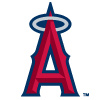 Luis Rengifo, 2B/3B/SS/OF, Angels
Luis Rengifo, 2B/3B/SS/OF, Angels
Round 25:  TJ Friedl, OF, Reds
TJ Friedl, OF, Reds
Round 26:  Randal Grichuk, OF, Angels
Randal Grichuk, OF, Angels
Round 27: 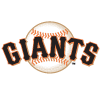 Taylor Rogers, RP, Giants
Taylor Rogers, RP, Giants
Round 28: 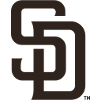 Michael Wacha, SP, Padres
Michael Wacha, SP, Padres
Round 29: 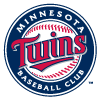 Bailey Ober, SP, Twins
Bailey Ober, SP, Twins
Round 30:  Mike Clevinger, SP, White Sox
Mike Clevinger, SP, White Sox
Undrafted: 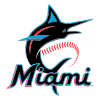 Jake Burger, 3B, Marlins: Burger was drafted in just one of 53 NFBC Main Event leagues last offseason and finished March with an ADP outside the top 600. He's set to finish the season as a top-100 fantasy earner, beating at least one first-rounder. Burger's lack of appeal over the winter was largely due to the fact that he was blocked on the White Sox's depth chart by Yoan Moncada, whose spotty health track record should perhaps have led to more focus on his understudy. Moncada couldn't even make it to the midpoint in April before hitting the injured list for the first time, and Burger grabbed hold of the opportunity and didn't look back. He earned a trade to the Marlins at the deadline with his strong performance and currently owns a .251/.311/.524 slash line between the two clubs, homering 34 times in 527 plate appearances. Only 14 players have more homers this season, and all but Aaron Judge have done so in at least 39 more plate appearances. Multiple serious Achilles injuries at the start of his professional career forced Burger to be a late-bloomer, but don't let his short track record (just 66 career MLB games prior to this season) cause you to miss out on him next year. His power is very real, as his 98th-percentile barrel rate indicates, and after striking out just 21.6 percent of the time since his move to Miami, he now owns an entirely tolerable 27.7 percent strikeout rate on the year to go with it.
Jake Burger, 3B, Marlins: Burger was drafted in just one of 53 NFBC Main Event leagues last offseason and finished March with an ADP outside the top 600. He's set to finish the season as a top-100 fantasy earner, beating at least one first-rounder. Burger's lack of appeal over the winter was largely due to the fact that he was blocked on the White Sox's depth chart by Yoan Moncada, whose spotty health track record should perhaps have led to more focus on his understudy. Moncada couldn't even make it to the midpoint in April before hitting the injured list for the first time, and Burger grabbed hold of the opportunity and didn't look back. He earned a trade to the Marlins at the deadline with his strong performance and currently owns a .251/.311/.524 slash line between the two clubs, homering 34 times in 527 plate appearances. Only 14 players have more homers this season, and all but Aaron Judge have done so in at least 39 more plate appearances. Multiple serious Achilles injuries at the start of his professional career forced Burger to be a late-bloomer, but don't let his short track record (just 66 career MLB games prior to this season) cause you to miss out on him next year. His power is very real, as his 98th-percentile barrel rate indicates, and after striking out just 21.6 percent of the time since his move to Miami, he now owns an entirely tolerable 27.7 percent strikeout rate on the year to go with it.
FALLERS
Round 1:  Bo Bichette, SS, Blue Jays: Eight players who finished March with a first-round ADP are set to finish the year as first-round values, with two more in the second, one in the fourth, two in the fifth and one in the sixth. Bichette, meanwhile, is on track to finish as a seventh-round value, just outside the top-100 overall — hardly a season-killer compared to the worst first-round landmines of previous seasons, but still well short of expectations. Bichette wasn't the flashiest of first-rounders to begin with, but he earned his spot by being a five-category contributor and a locked-in member of one of the league's better lineups. After playing 159 games in each of the last two seasons, however, he'll appear in no more than 135 this year, having hit the injured list with both knee and quadriceps issues. That's hurt his ability to be the elite compiler he usually is, as he's sitting on 20 homers, 64 runs and 71 RBI after averaging 26.5 homers, 106 runs and 97.5 RBI over the previous two seasons. Perhaps most worryingly for his fantasy value going forward, however, is the fact that he suddenly stopped running, swiping just four bags after stealing 25 in 2021 and 13 in 2022. His sprint speed dropped to the 42nd percentile, so he's probably not reversing that trend anytime soon.
Bo Bichette, SS, Blue Jays: Eight players who finished March with a first-round ADP are set to finish the year as first-round values, with two more in the second, one in the fourth, two in the fifth and one in the sixth. Bichette, meanwhile, is on track to finish as a seventh-round value, just outside the top-100 overall — hardly a season-killer compared to the worst first-round landmines of previous seasons, but still well short of expectations. Bichette wasn't the flashiest of first-rounders to begin with, but he earned his spot by being a five-category contributor and a locked-in member of one of the league's better lineups. After playing 159 games in each of the last two seasons, however, he'll appear in no more than 135 this year, having hit the injured list with both knee and quadriceps issues. That's hurt his ability to be the elite compiler he usually is, as he's sitting on 20 homers, 64 runs and 71 RBI after averaging 26.5 homers, 106 runs and 97.5 RBI over the previous two seasons. Perhaps most worryingly for his fantasy value going forward, however, is the fact that he suddenly stopped running, swiping just four bags after stealing 25 in 2021 and 13 in 2022. His sprint speed dropped to the 42nd percentile, so he's probably not reversing that trend anytime soon.
Round 2:  Sandy Alcantara, SP, Marlins: Even if Alcantara's performance didn't tail off this season, this didn't seem like it was going to be the year to draft him. His draft stock was at an all-time high after he posted a 2.28 ERA while throwing 23.2 more innings than anyone else last year, but the new rules didn't augur well for him. Specifically, removing the ability for the Marlins to align their infield optimally behind him didn't bode well for a pitcher who was among the league leaders in groundball rate, especially given that Miami's infield defense looked unreliable. The new rules aren't solely to blame for the fact that Alcantara's ERA jumped nearly two runs to 4.14, however, as a more conventional infield alignment can't be blamed for the fact that his strikeout rate fell to 19.8 percent. He maintained a groundball rate north of 50 percent for the third straight season and again posted a strong walk rate (6.3 percent), but it wasn't enough, and his 4.01 xFIP and 4.24 SIERA indicate that his results were more or less what he deserved. Most worrisome for next year — and potentially explaining some of his struggles this year — is that he'll end the season on the injured list due to a UCL sprain. Even if he avoids surgery and is ready to go by next year's spring training, he'll be without the durability that had helped drive his fantasy appeal.
Sandy Alcantara, SP, Marlins: Even if Alcantara's performance didn't tail off this season, this didn't seem like it was going to be the year to draft him. His draft stock was at an all-time high after he posted a 2.28 ERA while throwing 23.2 more innings than anyone else last year, but the new rules didn't augur well for him. Specifically, removing the ability for the Marlins to align their infield optimally behind him didn't bode well for a pitcher who was among the league leaders in groundball rate, especially given that Miami's infield defense looked unreliable. The new rules aren't solely to blame for the fact that Alcantara's ERA jumped nearly two runs to 4.14, however, as a more conventional infield alignment can't be blamed for the fact that his strikeout rate fell to 19.8 percent. He maintained a groundball rate north of 50 percent for the third straight season and again posted a strong walk rate (6.3 percent), but it wasn't enough, and his 4.01 xFIP and 4.24 SIERA indicate that his results were more or less what he deserved. Most worrisome for next year — and potentially explaining some of his struggles this year — is that he'll end the season on the injured list due to a UCL sprain. Even if he avoids surgery and is ready to go by next year's spring training, he'll be without the durability that had helped drive his fantasy appeal.
(injured: Mike Trout)
Round 3:  Daulton Varsho, C/OF, Blue Jays (injured: Jacob deGrom, Brandon Woodruff)
Daulton Varsho, C/OF, Blue Jays (injured: Jacob deGrom, Brandon Woodruff)
Round 4: 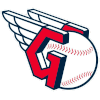 Shane Bieber, SP, Guardians
Shane Bieber, SP, Guardians
Round 5:  Alek Manoah, SP, Blue Jays (injured: Oneil Cruz)
Alek Manoah, SP, Blue Jays (injured: Oneil Cruz)
Round 6:  Tim Anderson, SS, White Sox (injured: Carlos Rodon)
Tim Anderson, SS, White Sox (injured: Carlos Rodon)
Round 7:  Alejandro Kirk, C, Blue Jays: I did my part ensuring Kirk would be on this list, as Kirk edged out the aforementioned Christopher Morel to become my most-drafted hitter last offseason. I couldn't help but get excited about a hitter who, in his first full season, had just walked more than he struck out while producing a 45.0 percent barrel rate. The result was a .285/.372/.415 slash line (130 wRC+) and plenty of extra starts at designated hitter. That all seemed to bode quite well for Kirk heading into his age-24 season, but the results have been rather uninspiring. His strikeout and walk rates have only trended slightly in the wrong direction, but his hard-hit rate has fallen to 38.4 percent, dragging his slash line down to .246/.333/.349. He's homered just seven times and has seen a drop in playing time, filling the DH spot just twice in the last two months. Looking back, more attention should perhaps have been paid to Kirk's downward trend in terms of power last season. Through the end of June, he owned a 10.6 percent barrel rate, but from July 1 onward he produced just a 3.5 percent barrel rate. Kirk has recorded a groundball rate of at least 50 percent in both 2022 and 2023, and his frequent contact will continue turning into groundouts instead of extra-base hits if he can't improve in that area.
Alejandro Kirk, C, Blue Jays: I did my part ensuring Kirk would be on this list, as Kirk edged out the aforementioned Christopher Morel to become my most-drafted hitter last offseason. I couldn't help but get excited about a hitter who, in his first full season, had just walked more than he struck out while producing a 45.0 percent barrel rate. The result was a .285/.372/.415 slash line (130 wRC+) and plenty of extra starts at designated hitter. That all seemed to bode quite well for Kirk heading into his age-24 season, but the results have been rather uninspiring. His strikeout and walk rates have only trended slightly in the wrong direction, but his hard-hit rate has fallen to 38.4 percent, dragging his slash line down to .246/.333/.349. He's homered just seven times and has seen a drop in playing time, filling the DH spot just twice in the last two months. Looking back, more attention should perhaps have been paid to Kirk's downward trend in terms of power last season. Through the end of June, he owned a 10.6 percent barrel rate, but from July 1 onward he produced just a 3.5 percent barrel rate. Kirk has recorded a groundball rate of at least 50 percent in both 2022 and 2023, and his frequent contact will continue turning into groundouts instead of extra-base hits if he can't improve in that area.
(injured: Tyler O'Neill, Vinnie Pasquantino)
Round 8:  Jake McCarthy, OF, Diamondbacks (injured: Kris Bryant)
Jake McCarthy, OF, Diamondbacks (injured: Kris Bryant)
Round 9:  Lance Lynn, SP, Dodgers (injured: Triston McKenzie, Nick Lodolo, Nestor Cortes)
Lance Lynn, SP, Dodgers (injured: Triston McKenzie, Nick Lodolo, Nestor Cortes)
Round 10: 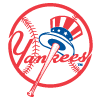 Luis Severino, SP, Yankees (injured: Jeffrey Springs)
Luis Severino, SP, Yankees (injured: Jeffrey Springs)
Round 11:  Jose Miranda, 1B/3B, Twins
Jose Miranda, 1B/3B, Twins
Round 12: 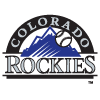 Daniel Bard, RP, Rockies
Daniel Bard, RP, Rockies
Round 13:  Miguel Vargas, 1B/2B, Dodgers: Along with Jose Miranda in Round 11 and Vaughn Grissom in Round 15, Vargas is part of a run of three duds in five rounds who fit a similar theme. All three entered the year as interesting young hitters on talented rosters, though none of the three was quite an elite prospect and none had fully established themselves at the MLB level. If the trio's inclusion in this article is any indication, perhaps that's a profile we ought to look more skeptically at going forward. All three struggled in the first half (or weren't even given the chance to prove themselves in Grissom's case), and with all three teams having plenty of infield alternatives available, none saw the field for a single game after the All-Star break. For Vargas' part, his season was unusual since the start, with a fracture in his pinky in spring training forcing him to do nothing more than stand and watch pitches go by during early Cactus League action. That experience may have helped him to a strong 12.5 percent walk rate during his 81 MLB games this season, but that's about the only part of his stat line he'll be happy with. He hit .195/.305/.367 (85 wRC+) with just seven homers, with his 31.3 percent hard hit rate showing that he consistently failed to make much impact. Add in the fact that he (understandably) fared poorly when shifting from third base to second base and it's no surprise the Dodgers didn't see the need to bring him back.
Miguel Vargas, 1B/2B, Dodgers: Along with Jose Miranda in Round 11 and Vaughn Grissom in Round 15, Vargas is part of a run of three duds in five rounds who fit a similar theme. All three entered the year as interesting young hitters on talented rosters, though none of the three was quite an elite prospect and none had fully established themselves at the MLB level. If the trio's inclusion in this article is any indication, perhaps that's a profile we ought to look more skeptically at going forward. All three struggled in the first half (or weren't even given the chance to prove themselves in Grissom's case), and with all three teams having plenty of infield alternatives available, none saw the field for a single game after the All-Star break. For Vargas' part, his season was unusual since the start, with a fracture in his pinky in spring training forcing him to do nothing more than stand and watch pitches go by during early Cactus League action. That experience may have helped him to a strong 12.5 percent walk rate during his 81 MLB games this season, but that's about the only part of his stat line he'll be happy with. He hit .195/.305/.367 (85 wRC+) with just seven homers, with his 31.3 percent hard hit rate showing that he consistently failed to make much impact. Add in the fact that he (understandably) fared poorly when shifting from third base to second base and it's no surprise the Dodgers didn't see the need to bring him back.
Round 14:  Patrick Sandoval, SP, Angels (injured: Anthony Rendon)
Patrick Sandoval, SP, Angels (injured: Anthony Rendon)
Round 15:  Vaughn Grissom, 2B/SS, Atlanta
Vaughn Grissom, 2B/SS, Atlanta
Round 16: Wil Myers, 1B/OF, Free Agent (injured: Trevor Rogers)
Round 17: Jean Segura, 2B/3B, Free Agent (injured: Garrett Mitchell, Jesse Winker)
Round 18:  Kolten Wong, 2B, Dodgers (injured: Austin Meadows)
Kolten Wong, 2B, Dodgers (injured: Austin Meadows)
Round 19:  Carlos Carrasco, SP, Mets
Carlos Carrasco, SP, Mets
Round 20:  Ross Stripling, SP, Giants
Ross Stripling, SP, Giants
Round 21:  Noah Syndergaard, SP, Guardians: "Syndergaard hasn't looked good in a while, but the team he's just joined has a great reputation for getting the most out of its pitchers, so he's worth a look." That's a thought you might reasonably have had at multiple points last season, either when he signed with the Dodgers over the winter or when he was dealt to the Guardians in late July. At the price you likely had to pay to get him, taking a chance on the pitcher formerly known as Thor seemed justifiable enough, but it couldn't have worked out much worse. His 12 starts with Los Angeles saw him struggle to a 7.16 ERA while he struck out just 15.4 percent of opposing batters, and while his ERA improved to a still-unusable 5.40 in six starts in Cleveland, his strikeout rate fell still further to 12.4 percent. This version of Syndergaard is worse than even some of the league's saddest veteran innings eaters, as seen in this oversimplified but illustrative comparison:
Noah Syndergaard, SP, Guardians: "Syndergaard hasn't looked good in a while, but the team he's just joined has a great reputation for getting the most out of its pitchers, so he's worth a look." That's a thought you might reasonably have had at multiple points last season, either when he signed with the Dodgers over the winter or when he was dealt to the Guardians in late July. At the price you likely had to pay to get him, taking a chance on the pitcher formerly known as Thor seemed justifiable enough, but it couldn't have worked out much worse. His 12 starts with Los Angeles saw him struggle to a 7.16 ERA while he struck out just 15.4 percent of opposing batters, and while his ERA improved to a still-unusable 5.40 in six starts in Cleveland, his strikeout rate fell still further to 12.4 percent. This version of Syndergaard is worse than even some of the league's saddest veteran innings eaters, as seen in this oversimplified but illustrative comparison:
| Pitcher | ERA | K% |
|---|---|---|
| Noah Syndergaard | 6.50 | 14.3% |
| Jordan Lyles | 6.24 | 16.0% |
| Patrick Corbin | 5.20 | 15.7% |
It's quite the fall from grace for a pitcher who had upper-90s heat and a 3.31 ERA across his first five MLB campaigns. This year was merely his age-30 season, but with his fastball now averaging just 92.3 mph (slower than his slider at its peak back in 2017), he seems destined to serve as a reminder that pitchers don't always get nearly all the way back from Tommy John surgery. I'm not convinced he's anymore interesting than Lyles or Corbin heading into 2024.
Round 22:  Manuel Margot, OF, Rays (injured: Nick Gordon)
Manuel Margot, OF, Rays (injured: Nick Gordon)
Round 23:  David Peterson, SP, Mets
David Peterson, SP, Mets









